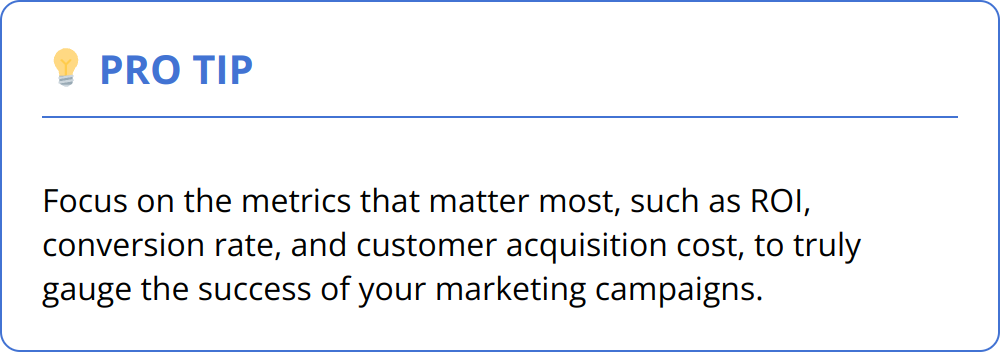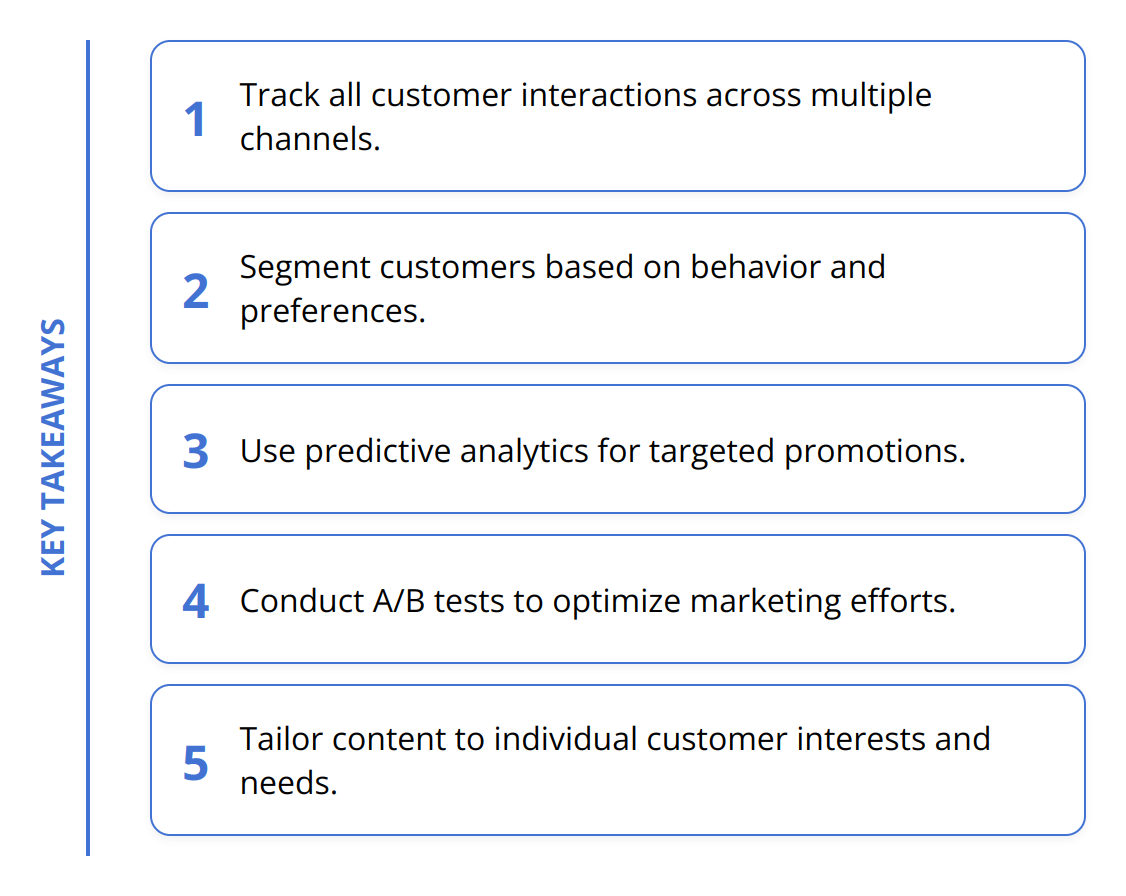Data analytics has become the backbone of successful marketing strategies. We at Emplibot believe that understanding and harnessing the power of big data can significantly elevate the effectiveness of marketing efforts. This guide explores the critical roles of data analytics in marketing from understanding customer behavior to personalizing customer experiences. Let’s explore how marketers can use analytical tools and techniques to boost campaign performance and engage customers more effectively.
Understanding Customer Behavior
In today’s hyper-competitive market, knowing what your customers want, when they want it, and why they prefer it, transforms marketing from shooting in the dark to a targeted approach, ultimately leading to higher engagement and conversion rates. Let’s walk through how to achieve this understanding through practical use of data analytics.
Track Every Interaction: The first step towards deep customer understanding is to track their interactions with your brand. This includes website visits, email opens, social media engagement, and purchase history. Tools like Google Analytics and CRM systems provide a wealth of information about customer interactions and preferences. These tools offer the real-time data that’s essential in understanding how customers interact with your brand across various touchpoints.
Customer Segmentation Is Key: Not all customers are created equal. Some might prefer discounts, while others value exclusive access. By segmenting your customers based on their behavior and preferences, you can tailor your marketing messages to resonate with each segment. Such personalization significantly enhances customer experience and loyalty. You can segment customers based on demographics, purchase history, or even how they interact with your site. For practical guidance, take a look at our piece on predictive customer segmentation.

Predict and Act: Armed with data on past behaviors, marketers can now predict future actions. For instance, if data shows a spike in demand for certain products during specific periods, businesses can prepare by stocking up in advance or running targeted promotions. Predictive analytics tools go a step further by using machine learning algorithms to forecast future customer behaviors based on historical data. This predictive insight allows for proactive rather than reactive marketing strategies, ensuring that your marketing efforts are always one step ahead.
Here are some tips to keep in mind:
-
Regularly update your customer segments as preferences can shift over time.
-
Always test your predictions with a small campaign before a full rollout to minimize risks.
-
Utilize A/B testing to refine and optimize your predictive models.
In essence, the intersection of customer behavior insights with targeted marketing strategies ensures not only increased customer satisfaction but also boosts your ROI significantly. By tracking customer interactions, segmenting them accurately, and predicting their future behavior, marketers can create highly effective, personalized marketing campaigns that resonate deeply with their target audience.

Optimizing Campaigns with Analytics
With the insights gained from understanding customer behavior, the next logical step is to apply data analytics to optimize marketing campaigns. The goal here is straightforward: to squeeze out every ounce of efficiency and effectiveness from your marketing efforts.
Data analytics is indispensable in identifying which marketing channels deliver the best return on investment (ROI). By analyzing campaign data, you can pinpoint exactly which channels – be it social media, email, search engine marketing, or others – are driving the most conversions. It’s about investing more in what works and less in what doesn’t. Remember, not all channels are created equal, and data gives you the clarity to see that.
A/B testing, or split testing, should be a constant in your marketing playbook. It allows you to test different ad copies, creative strategies, and even landing pages to see which versions convert better. By making informed decisions based on actual data rather than gut feelings, you drastically reduce wastage on underperforming ads and boost your campaign’s overall performance. Think of it as Darwinism for your marketing content – survival of the fittest.
Lastly, the real-time nature of digital marketing necessitates constant vigilance. Campaign performance analysis goes beyond seeing what worked; it’s about rapidly adjusting strategies based on what the data is telling you. Perhaps a certain type of creative suddenly starts underperforming or a specific demographic segment responds better than expected – being agile and ready to pivot is key.

Here are some actionable insights:
-
Focus on the metrics that matter: ROI, conversion rate, and customer acquisition cost.
-
Regularly conduct A/B tests on different elements of your marketing to continually refine your approach. For practical advice on conducting effective A/B tests, visit A/B testing best practices.
-
Don’t just collect data; act on it. Use analytics to make real-time adjustments to your campaigns.
In conclusion, leveraging data analytics for campaign optimization is not just about doing marketing better. It’s about doing marketing smarter, ensuring that every dollar spent is an investment towards higher engagement, better conversions, and ultimately, unmatched customer satisfaction.
Enhancing Customer Experience Through Data
In the age where customer experience can make or break businesses, personalizing this experience has become non-negotiable. Marketers have embraced data analytics as the cornerstone of crafting personalized customer interactions. This process involves meticulously tailoring content and offers to meet individual preferences, predicting customer needs before they even articulate them, and enhancing the customer journey with rich, data-driven insights.
The Power of Tailored Content
The foundation of personalization lies in delivering content and offers that resonate with each customer’s unique interests and needs. Imagine receiving an email that speaks directly to your current dilemmas, preferences, and desires. The chance of engaging with such content skyrockets because it feels made just for you.
Marketers achieve this by mining data for insights on past behavior, preferences, and interactions. For instance, if data shows a customer frequently purchases natural skincare products, marketers can tailor their content to highlight new organic ranges or offer discounts on eco-friendly brands. This approach not only increases the relevance of the marketing efforts but significantly boosts conversion rates. Successful personalization hinges on deep data analysis and the willingness to constantly adapt offerings to match evolving customer profiles.
Predictive Analytics: Anticipating Needs
Predictive analytics represents the frontier of personalization, offering recommendations that customers find genuinely helpful. These systems analyze past behavior to predict future needs, presenting products or services a customer is likely to be interested in, sometimes before they’re even aware of the need themselves.
For guidance on utilizing predictive analytics effectively, predictive analytics marketing provides comprehensive insights. Properly implemented, predictive analytics can dramatically enhance the shopping experience, leading to increased loyalty and spend. The key here is precision and timing, delivering personalized recommendations when they are most relevant to the customer.

Optimizing the Customer Journey
Every touchpoint along the customer journey offers an opportunity for personalization. By leveraging data analytics, businesses can understand how customers interact with their brand across different platforms and touchpoints. This holistic view allows for the optimization of each stage of the journey, ensuring smooth transitions and consistently personalized interactions. Tools that map out customer journeys in detail, identifying pain points and areas for improvement, are invaluable in this process. For example, if analytics reveal that customers frequently abandon their carts on mobile devices due to a cumbersome checkout process, simplifying this process becomes an immediate priority.
Personalization is not a one-time effort but a continuous process of learning and adaptation. As customer preferences shift and new data comes in, strategies must evolve. Keeping close tabs on data analytics ensures that personalization efforts remain on point, delivering the right message, to the right person, at the right time.
Practical Tips for Marketers:
-
Invest in robust analytics tools that offer deep insights into customer behaviors and preferences.
-
Routinely segment your audience to ensure content and offers align with specific customer groups.
-
Leverage A/B testing to refine personalized content and offers, ensuring they resonate with the intended audience.
-
Stay agile, using real-time data to adjust strategies and enhance the customer journey at every touchpoint.
By integrating data analytics into every facet of the marketing strategy, businesses can transform the customer experience, fostering deeper connections and driving unparalleled engagement and loyalty.
Wrapping Up
Data analytics has revolutionized marketing, transforming it into a data-driven discipline that enhances efficiency, precision, and customer engagement. Through the meticulous analysis of customer behavior, campaign optimization, and personalized customer experiences, marketers can now predict and meet customer needs more accurately than ever before. This shift towards a data-centric approach not only improves marketing outcomes but also elevates the overall customer journey, making interactions with brands more relevant and rewarding.

The landscape of data-driven marketing is in constant flux, with new analytical tools and techniques emerging regularly. This continuous evolution represents an opportunity for marketers to refine their strategies and adopt more sophisticated approaches to engaging their audience. The use of predictive analytics, real-time data monitoring, and advanced segmentation techniques are just the tip of the iceberg. As the field advances, embracing these innovations will be key to staying ahead in the competitive world of digital marketing.
For marketers looking to harness the power of data analytics, the journey begins with choosing the right tools. Embracing analytical tools and techniques not only aids in better decision-making but also in crafting marketing strategies that resonate on a deeper level with target audiences. It’s essential for marketers to continuously learn and adapt to these evolving technologies to fully leverage the potential of data-driven marketing.
We at Emplibot understand the importance of data analysis in crafting compelling content that boosts engagement and drives traffic. Our solution, which publishes SEO-friendly articles automatically to WordPress sites, is designed to help businesses optimize their content strategy effortlessly. By integrating keyword research, images, and internal linking, Emplibot ensures that your blog remains vibrant and relevant, engaging your audience effectively without manual effort.
In conclusion, the integration of data analytics into marketing strategies has proven to be transformative, offering unparalleled insights into customer preferences and behavior. It is an exciting time for marketers to embrace these analytical tools and techniques, pushing the boundaries of what’s possible in digital marketing. As we move forward, staying informed and adaptable will be critical for those looking to excel in this data-driven landscape.

